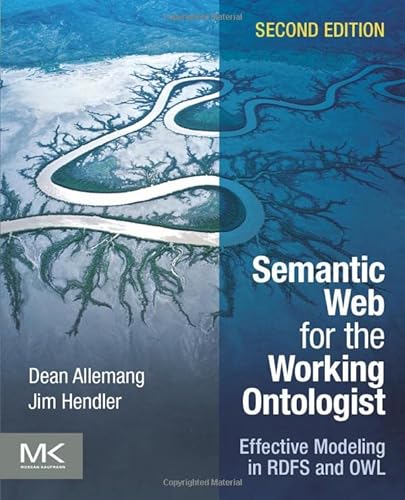Semantic Web models and technologies provide information in machine-readable languages that enable computers to access the Web more intelligently and perform tasks automatically without the direction of users. These technologies are relatively recent and advancing rapidly, creating a set of unique challenges for those developing applications. Semantic Web for the Working Ontologist is the essential, comprehensive resource on semantic modeling, for practitioners in health care, artificial intelligence, finance, engineering, military intelligence, enterprise architecture, and more. Focused on developing useful and reusable models, this market-leading book explains how to build semantic content (ontologies) and how to build applications that access that content. New in this edition: Coverage of the latest Semantic Web tools for organizing, querying, and processing information - see details in TOC below Detailed information on the latest ontologies used in key web applications including ecommerce, social networking, data mining, using government data, and more
"Overall, this book provides a thorough and cogent introduction to the semantic Web. Giving just enough philosophical background, the authors focus on the practical aspects of constructing data stores and applications. This blend of philosophy and practical descriptions leads the reader to anticipate how the standards of the semantic Web should work before the standards are described. As a result, the reader is likely to feel that the semantic Web works just as it should." --Computing Reviews
"Allemang, a scientist at a company that consults, trains, and provides products for the Semantic Web, and Hendler (computer and cognitive science, Rensselaer Polytechnic Institute) explain how web developers who are practitioners in another field, such as health care, finance, engineering, national intelligence, and enterprise architecture, can model data to fit the requirements of the Semantic Web. They detail how to construct semantic models, with a focus on the use of RDF (Resource Description Framework), RDFS (RDF schema), and OWL (Web Ontology Language) to accomplish specific tasks and model data and domains. This edition has been updated to incorporate new technologies such as SPARQL (SPARQL Protocol And RDF Query Language), OWL 2.0, and SKOS (Simple Knowledge Organization System). They include examples of Quantities, Units, Dimensions, and Types (QUDT) and The Open Biological and Biomedical Ontologies (OBO), as well as examples of how to use the Semantic Web to solve common modeling problems and a FAQ section on challenges." --SciTech Book News
"Overall, this is an easy-to-follow guide to the basic concepts related to building semantic Web ontologies. The book flows well from chapter to chapter, and the many examples illustrate the different topics. For beginners, it’s an excellent introduction to the subject, which is exactly what the authors intended..." --Computing Reviews.com
